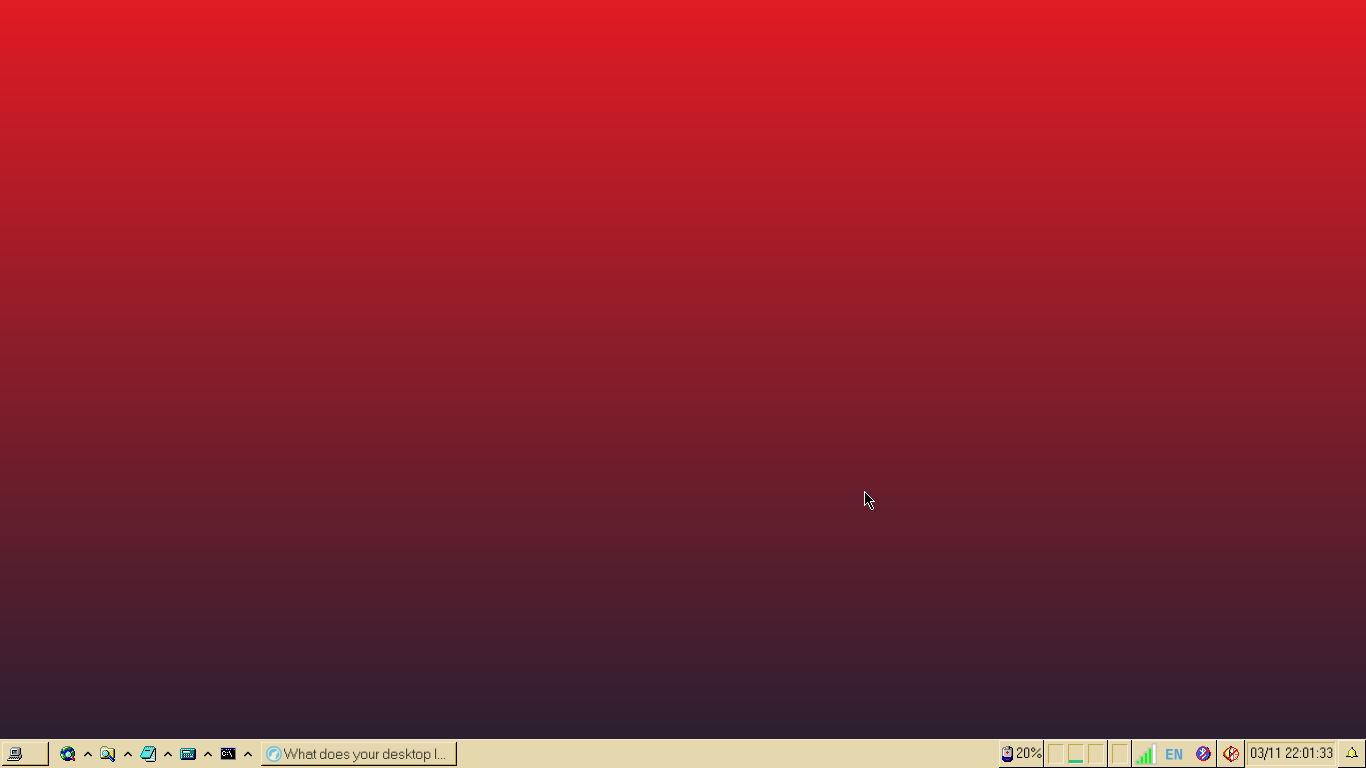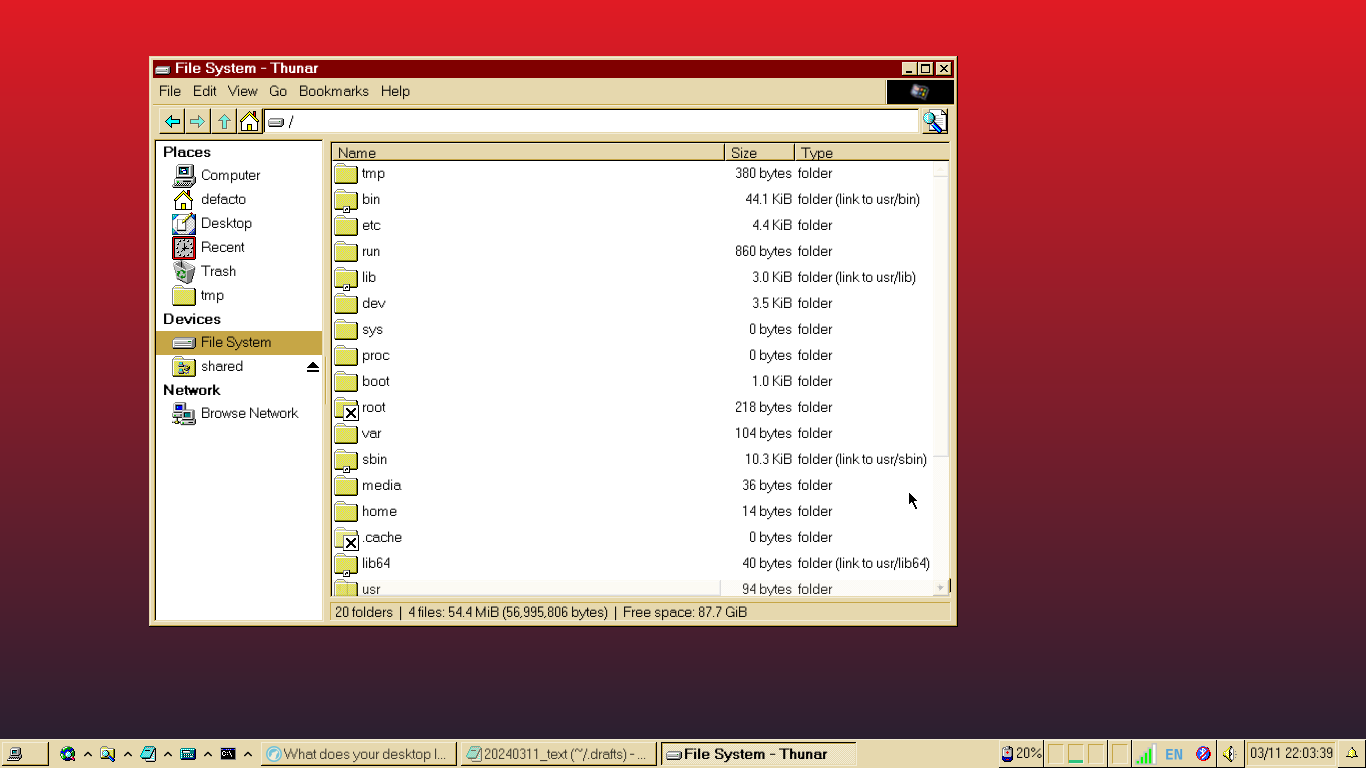No shame in that. My phone's at 305 tabs. I'll look random things up throughout the day and sometimes I'll find a longer article that I'd like to read later. But I hate reading on my phone. So it just hangs out until my next tab purge, which is perhaps a yearly event.
monovergent


More or less replicated the desktop layout I had used throughout childhood, sans desktop icons
- Debian 12 stable
- XFCE + Chicago95
- Chicago95 black cursors
- Helvetica bitmap font
- Not shown: wdm login and slock screen locker
- Running on an X230T with classic keyboard mod to complete the look
Windows 10. When your OS no longer respects your choices and you have to fight it every minute, there is something wrong. The creeping invasions on privacy have only cemented my use of Linux
Truthfully, I'm not sure if I would have ever switched over if Microsoft kept the Windows 7 paradigm. But I started my search for alternatives when Windows 8 - already too adventurous for me - came with the computer I bought.
Towards the end of my time using Windows 10 as my primary OS, the realization that the UI is not an inherent component of the OS sealed the deal. As a Windows 2000 fan, I fell in love with the way Chicago95 Debian replicated the look and stability that I had sorely missed.
yt-dlp. Too many options to remember and look up every time, but all useful and missing from GUIs when you just want to dowload audio or 'good enough' quality video in batches without re-encoding.
While nmtui is perfectly fine for the CLI-uninitiated, I sometimes wonder why the nm-connection-editor window doesn't provide the same level of functionality.